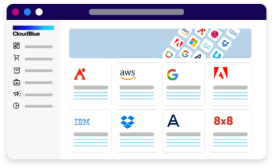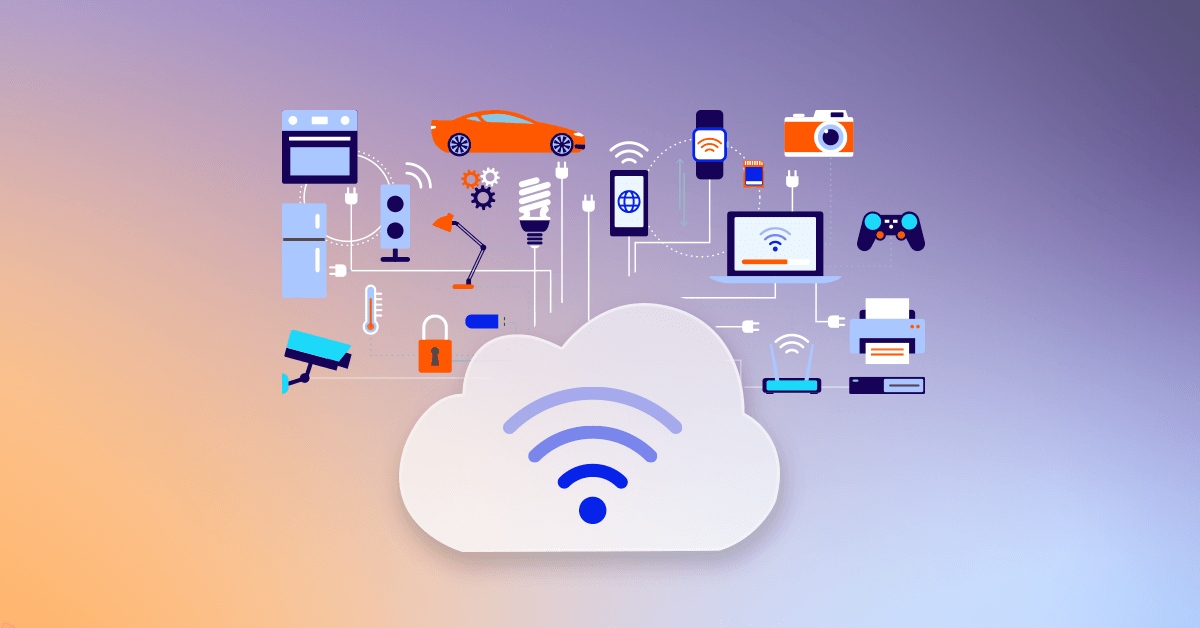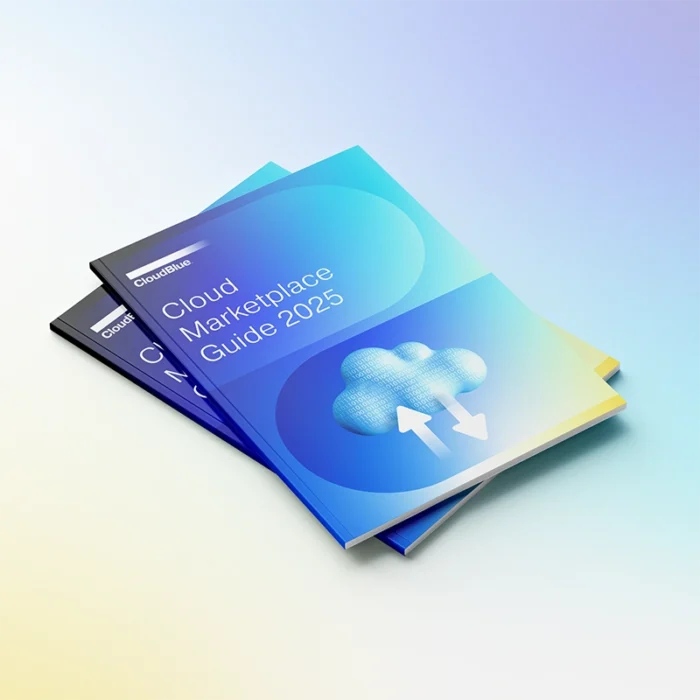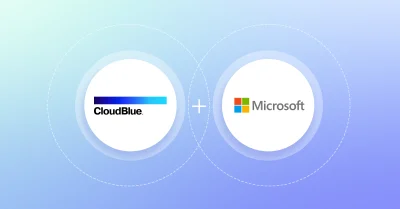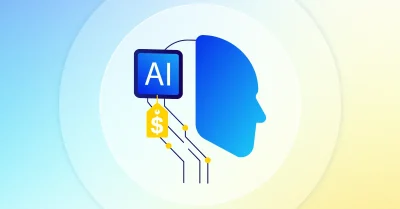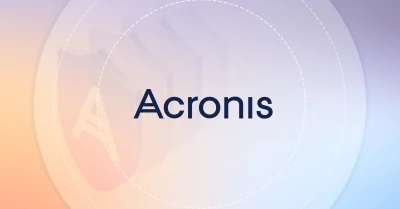Define the Internet of Things
The Internet of Things (IoT) refers to objects that have sensors, software, and network connectivity, and can exchange data over the internet. These objects, often called “smart” objects, devices, or machines, can operate and interact with their environment on their own, without human intervention.
By connecting to the internet, devices in the IoT network can communicate with each other, share data, and perform tasks.
IoT has transformed the way people interact with the world around them. The technology has led to the development of smart homes, cities, and industries. IoT enables a range of applications within environmental monitoring, traffic control, healthcare, agriculture, and others.
IoT generates massive amounts of data, which is typically stored and processed in the cloud. This creates an opportunity for cloud providers to offer services that help organizations manage and make sense of their IoT data. Using gathering and analyzing real-time data from their operations, businesses can enhance their efficiency and productivity.
Why is the Internet of Things important?
IoT is important because it has the potential to transform the way we live, work, and interact with our environment. IoT can be used to improve efficiency, productivity, and safety. For example, IoT-enabled smart homes can automatically adjust temperature, lighting, and home security system settings based on the occupants’ preferences and behavior. IoT-connected vehicles can provide real-time traffic updates and safety alerts to drivers.
IoT enables businesses to collect and analyze real-time data from their operations to improve decision-making and optimize processes. Manufacturers can use IoT sensors to monitor equipment performance and predict maintenance needs. Retailers can keep track of stock levels and optimize supply chains with IoT.
How large is the IoT market and how much is it expected to grow?
According to a report by Grand View Research, the global IoT market size was valued at $321.81 billion in 2022. The market is expected to continue its growth trajectory and reach $566.4 billion by 2027, according to a report by MarketsandMarkets.
The growth of the IoT market is being fueled by several factors. A few reasons include the increasing adoption of cloud platforms, the rising demand for smart devices and home automation, and the growth of wireless communication technologies. The emergence of advanced data analytics and AI technologies are also driving the growth of IoT.
How is IoT used in the telecom Industry?
IoT technology is being widely adopted in the telecom industry. The technology offers a range of benefits such as enhanced network management, improved asset tracking, and an elevated customer experience. Telcos can enable devices with IoT to gather data, optimize network performance, and provide innovative services and solutions. As a result of these efforts, telcos can drive revenue growth and improve overall customer satisfaction.
- Network Management: Internet of Things devices can be used to monitor and manage telecom networks. These internet-connected devices can collect data on network performance, traffic patterns, and usage. As a result, telcos can optimize their networks for better performance and efficiency.
- Asset Tracking: Telcos can use IoT devices to track the location and status of their assets. This allows for better asset management, maintenance, and predictive maintenance, reducing downtime and improving network performance.
- Customer Experience: By gathering data on customer behavior and preferences, IoT enables telcos to tailor their services to better meet customer needs and improve the customer experience.
- Smart Cities: IoT devices can be used to create smart cities, where networks of connected devices can be used to monitor and manage everything from traffic flow to energy consumption. Telecom companies can play a critical role in the development of smart cities by providing the connectivity and infrastructure needed to support these networks.
- Innovative Services: Telecom companies can leverage IoT technology to offer innovative services and solutions, such as connected cars, smart homes, and wearables. These services can provide new revenue streams for telecom companies and enhance customer experience.
What does IoT mean for the telecom industry?
IoT is expected to have a significant impact on the telecom industry. The telecom industry plays a crucial role in enabling IoT by providing the necessary connectivity and infrastructure. IoT devices require a reliable and robust network to transmit data to the cloud and receive instructions from the cloud.
The telecom industry is investing heavily in building 5G networks to better support IoT. IoT devices provide a large amount of data, which telcos can use to enhance their networks, increase efficiency, and improve customer experiences. The number of IoT device continues to grow. According to a report by Ericsson, the number of IoT connections is expected to surpass five billion by 2028.
Telcos are using IoT to offer new services. AT&T has implemented an IoT solution for cargo fleet tracking. The technology uses GPS tracking and other sensors to monitor vehicles, optimize routes, and improve fuel efficiency. In another example, Vodafone has developed an IoT platform called “Vodafone IoT Connect” that offers managed IoT connectivity, device management, and application management in a single solution. Vodafone IoT Connect enables the creation of IoT applications supported by Vodafone’s network.
What are the four types of IoT?
- Wearable IoT Devices: Devices that are worn on the body, such as smartwatches and fitness trackers. They collect data such as heart rate, steps taken, and sleep patterns and can communicate this data to other devices.
- Home IoT Devices: Gadgets within a home environment, such as smart thermostats, lighting systems, and security systems, which are designed to automate and optimize home environments.
- Industrial IoT Devices: Tools for industrial settings such as factories and warehouses. They are used to monitor and control machines, equipment, and processes to help companies to optimize their operations.
- Enterprise IoT Devices: Technology used in business settings, such as smart office equipment, asset tracking systems, and inventory management systems, to provide real-time data on assets and operations to enable data-driven decisions.
What are the three main components of the Internet of Things?
The three main components of IoT are things, connectivity, and data processing. These components work together to enable the collection, transmission, and analysis of data from IoT devices.
- Things: Things refer to the physical objects or devices that are connected to the internet and have the ability to generate and transmit data. Examples of things include sensors, cameras, wearables, and other smart devices.
- Connectivity: Connectivity refers to the network infrastructure and protocols that enable communication between IoT devices and other systems. This includes wireless and wired networks, Wi-Fi, Bluetooth, and others.
- Data Processing: Data processing refers to collecting, storing, analyzing, and acting on the data generated by IoT devices. This includes cloud-based platforms, data analytics tools, and artificial intelligence algorithms.
What are the seven layers of the Internet of Things?
The seven layers of IoT are the components that work together to enable the communication and exchange of data between IoT devices. The layers are:
- Physical layer: The physical components of the IoT system, including sensors, actuators, and other devices that capture and transmit data.
- Data link layer: Manages the communication between devices, including protocols such as Wi-Fi, Bluetooth, and Zigbee.
- Network layer: Handles the routing and delivery of data between devices using protocols.
- Transport layer: Controls the end-to-end communication between devices using protocols.
- Session layer: Responsible for the establishment and termination of sessions between devices.
- Presentation layer: Runs the formatting and encoding of data using protocols.
- Application layer: Represents the applications and services that run on top of the IoT system.
What types of businesses use the Internet of Things?
IoT has a wide range of applications and the technology be used by businesses in various industries. Some of the most common types of businesses that use IoT include:
- Manufacturing: Optimize production processes, monitor equipment performance, and improve product quality with IoT in manufacturing. Sensors can be placed on production equipment to identify and address issues.
- Healthcare: Monitor patient health, improve clinical outcomes, and reduce healthcare costs with IoT in healthcare. Wearable devices can be used to monitor vital signs and alert healthcare providers to potential health issues in patients.
- Retail: Improve the customer experience, optimize supply chain management, and increase operational efficiency in retail. Sensors can be used to track inventory levels, optimize product placement, and track customer behavior.
- Smart Cities: IoT can help to create smart cities by using sensors to improve public safety, reduce traffic congestion, and optimize energy usage.
- Agriculture: Increase crop yields, reduce waste, and improve sustainability with IoT in agriculture. Sensors can be used to monitor soil moisture and nutrient levels, allowing farmers to optimize irrigation and fertilizer use.

